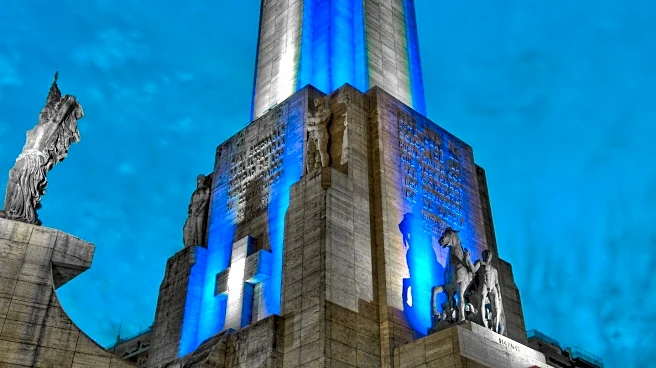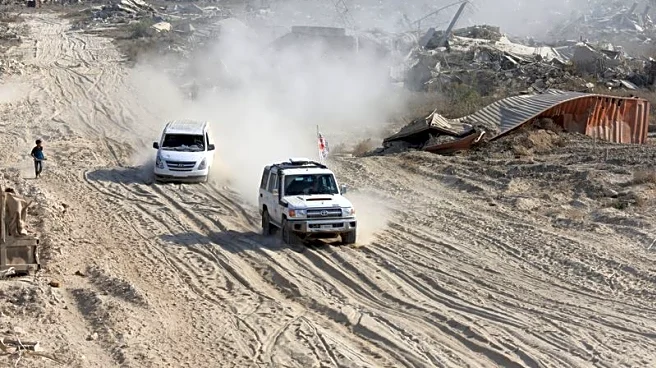What's Happening?
A memorial site named 'Bibas Footprints' has been unveiled in Kibbutz Tze'elim, honoring the family of Yarden Bibas, who was held captive by Hamas for 484 days. The memorial features footprints and handprints
of Bibas's wife, Shiri, and their children, Ariel and Kfir, who were tragically murdered in captivity. The site, initiated by Boaz Kratchmer and designed by landscape architect Tzvika Pasternak, aims to serve as a poignant reminder of the family's legacy and the broader impact of their story. The memorial, costing approximately $93,000, will open to the public following a dedication ceremony in December.
Why It's Important?
The 'Bibas Footprints' memorial represents a significant cultural and emotional landmark, highlighting the personal and collective trauma experienced by families affected by conflict. It serves as a symbol of resilience and remembrance, offering a space for reflection and connection to the broader narrative of loss and survival. The memorial underscores the importance of preserving memories and honoring those who have suffered, while also fostering community solidarity and awareness. It is expected to attract visitors, contributing to local tourism and providing a place for communal healing.
What's Next?
The memorial will officially open to the public after a dedication ceremony scheduled for early December. It will be maintained by Kibbutz Tze'elim and the Eshkol Regional Council, ensuring its preservation and accessibility. The site is anticipated to become a destination for travelers and locals alike, offering a space for reflection and education about the Bibas family's story. Community leaders hope that visitors will respect the site and its significance, fostering a deeper understanding of the impact of conflict and the importance of remembrance.
Beyond the Headlines
The creation of the 'Bibas Footprints' memorial highlights the ethical and cultural dimensions of memorializing victims of conflict. It raises questions about how societies remember and honor those who have suffered, and the role of public memorials in shaping collective memory. The site also reflects the broader narrative of resilience and the human capacity to find meaning and connection in the face of tragedy. It serves as a testament to the enduring impact of personal stories on national and international consciousness.












